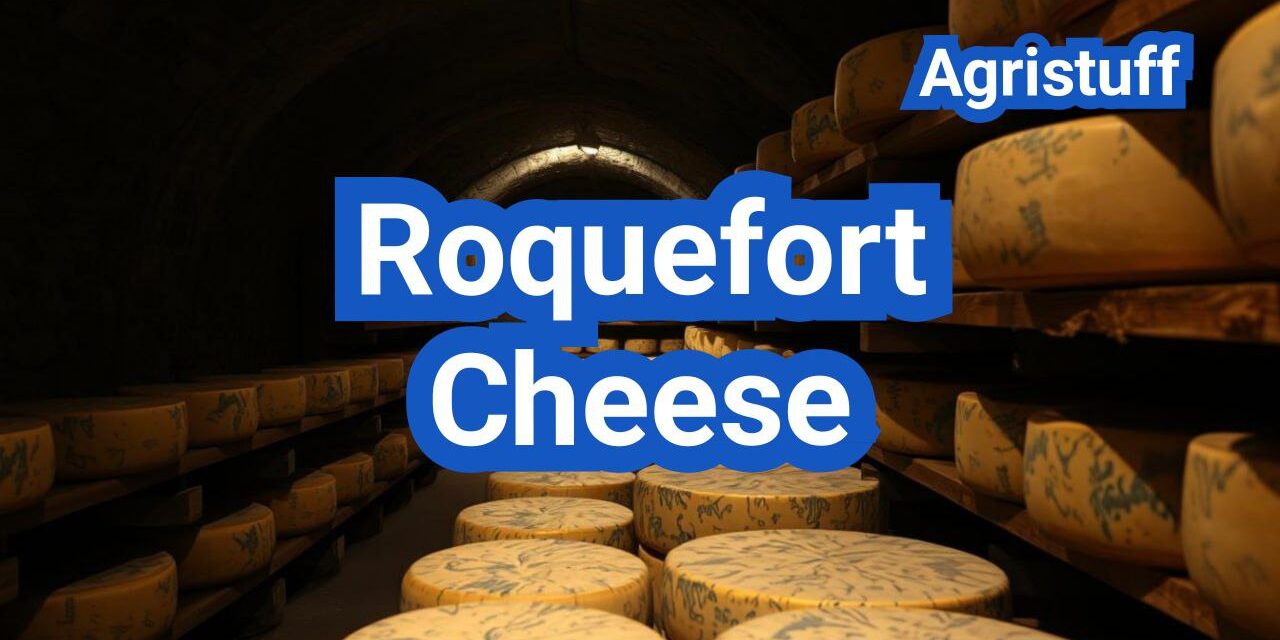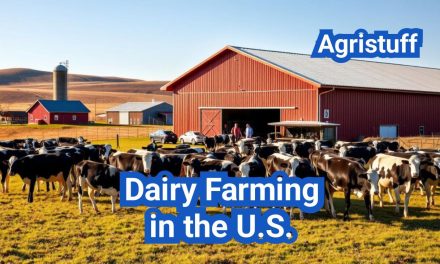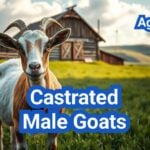Roquefort is a renowned blue cheese originating from southern France and consider as soft cheese, made from sheep’s milk. It is known for its tangy, creamy, and slightly moist texture, with distinctive veins of blue mold.
This king of cheeses has a rich history and a distinct flavor profile that has captivated cheese enthusiasts worldwide. The article will explore the history, types, processing steps, equipment, and various uses of this iconic cheese.
Key Takeaways
- Overview of Roquefort cheese and its significance
- History and origins of Roquefort cheese
- Types and classifications of Roquefort cheese
- Processing steps involved in making Roquefort cheese
- Equipment used in the production of Roquefort cheese
- Various uses of Roquefort cheese in culinary applications
The King of Blue Cheese: What Makes Roquefort Special
Roquefort cheese, often hailed as the king of blue cheeses, owes its distinctive character to a unique combination of traditional production methods and specific geographical conditions. This blue-veined cheese has been a staple of French cuisine for centuries, renowned for its rich flavor and creamy texture.
Defining Characteristics of Roquefort Cheese
The uniqueness of Roquefort cheese is largely attributed to its production process, which involves the use of Lacaune sheep’s milk. This specific type of milk is rich in nutrients and contributes to the cheese’s distinctive taste and texture. Another crucial element is Penicillium roqueforti, a type of mold that gives Roquefort its characteristic blue-green veins. The interaction between the sheep’s milk and this mold results in a complex flavor profile that is both tangy and slightly sweet.
The production of Roquefort is strictly regulated, ensuring that only cheese produced in the designated area around Roquefort-sur-Soulzon can bear the name. This geographical limitation is part of what maintains the cheese’s high quality and authenticity.
The Protected Status of Roquefort
Roquefort cheese holds a protected designation of origin (PDO) status, a certification that recognizes its unique production methods and geographical origin. This status is granted by the European Union and ensures that Roquefort cheese is produced according to traditional methods within a specific region. The PDO status protects the name “Roquefort” and guarantees that consumers are purchasing authentic products that adhere to strict production standards.
The protected status also implies that the production of Roquefort is subject to rigorous controls, including the origin of the milk, the breeding conditions of the Lacaune sheep, and the aging process of the cheese. These regulations are in place to preserve the traditional character of Roquefort while ensuring its quality and safety.
The Rich History of Roquefort Cheese

With a heritage dating back to the Middle Ages, Roquefort cheese is one of the world’s oldest known cheeses. Its history is intertwined with the legends of the region and the cultural practices of the people who have produced it for centuries.
Ancient Origins and Legends
The origins of Roquefort are shrouded in legend, with stories dating back to the 11th century. One such legend tells of a young shepherd who, while pursuing a beautiful maiden, left his cheese in a cave. Upon returning, he found that the cheese had transformed into Roquefort, infused with the unique mold that characterizes it today.
While the exact circumstances of Roquefort’s discovery may be lost to history, it is clear that the cheese has been produced in the Roquefort-sur-Soulzon region of France for centuries. The natural caves of the Combalou massif provided the perfect conditions for the cheese’s development, with the unique microclimate and natural ventilation system (known as fleurines) contributing to its distinctive flavor and texture.
Evolution Through the Centuries
Over the centuries, the production of Roquefort has evolved significantly. From its early days as a local product consumed by the peasantry, Roquefort gradually gained popularity among the nobility and clergy. By the 17th century, it had become a staple at the French royal court, further enhancing its reputation.
The development of Roquefort was also influenced by the region’s history, including the period of the French Revolution. The cheese’s production was initially disrupted, but it later benefited from the establishment of formal production standards and the protection of its name.
“Roquefort is a cheese that has been shaped by the history of France, and in turn, has contributed to the country’s rich culinary heritage.”
Roquefort’s Historical Significance in French Culture
Roquefort’s significance extends beyond its taste and production methods; it is deeply ingrained in French culture. The cheese has been a symbol of French gastronomy for centuries, with its production and consumption reflecting the country’s values and traditions.
| Year | Event | Significance |
|---|---|---|
| 11th Century | First written records of Roquefort | Marks the beginning of Roquefort’s documented history |
| 17th Century | Roquefort gains popularity at the French royal court | Enhances Roquefort’s reputation and demand |
| 20th Century | AOC status granted to Roquefort | Protects the name and production methods, ensuring authenticity |
Today, Roquefort remains a celebrated component of French cuisine, enjoyed worldwide for its unique characteristics and rich history.
The Origin and Terroir of Roquefort
Roquefort cheese originates from the village of Roquefort-sur-Soulzon, where the unique combination of geological features and microclimate contributes to its unique taste. The terroir of this region in southern France is crucial to understanding the distinctive characteristics of Roquefort.
The Village of Roquefort-sur-Soulzon
The village of Roquefort-sur-Soulzon has been the heart of Roquefort production for centuries. Its unique location and historical significance make it a pivotal place in the history of French cheese-making. The village is known for its caves, which play a crucial role in the aging process of Roquefort.
The Combalou Massif and Its Geological Features
The Combalou massif is a limestone plateau that houses the natural caves where Roquefort is aged. Its geological features are characterized by a network of fleurines or natural ventilation shafts that provide the perfect conditions for the development of Penicillium roqueforti, the mold that gives Roquefort its distinctive veining and flavor.
The unique geological setup of the Combalou massif ensures a consistent temperature and humidity level within the caves, ideal for aging Roquefort. This natural environment is a key factor in the cheese’s development, contributing to its complex flavor profile.
The Unique Microclimate of the Region
The microclimate of Roquefort-sur-Soulzon is another critical factor in the production of Roquefort cheese. The region’s climate, characterized by cold winters and hot summers, combined with the natural ventilation provided by the Combalou massif, creates an environment that fosters the growth of the cheese’s signature mold.
- The region’s humidity and temperature fluctuations contribute to the cheese’s aging process.
- The unique combination of the village’s location and the Combalou massif’s geological features creates a terroir that is unmatched worldwide.
- This terroir is what makes Roquefort cheese so distinctive and sought after.
In conclusion, the origin and terroir of Roquefort are deeply intertwined with the village of Roquefort-sur-Soulzon and its surroundings. The Combalou massif and the region’s microclimate play crucial roles in shaping the characteristics of this iconic cheese.
The Magical Caves of Roquefort

The caves of Roquefort-sur-Soulzon are a marvel of natural engineering, providing the perfect environment for aging Roquefort cheese. These caves, located beneath the village, have been used for centuries to mature the cheese, giving it its distinctive flavor and texture.
Formation and Natural Properties of the Caves
The Combalou massif, in which the caves are situated, is a geological formation that has created a unique environment. The caves are characterized by their stable temperature and high humidity, conditions that are ideal for the aging process of Roquefort cheese. As Jean-Anthelme Brillat-Savarin once said, “The discovery of a new dish does more for human happiness than the discovery of a new star.” The caves are a crucial part of this gastronomic journey.
The natural properties of the caves are further enhanced by their fleurines, natural ventilation shafts that regulate airflow and maintain the humidity and temperature levels. This natural ventilation system is essential for preventing the growth of unwanted mold and ensuring the cheese ages properly.
The Role of Fleurines (Natural Ventilation)
The fleurines are a unique feature of the Roquefort caves. These natural vents provide a constant flow of air, which is crucial for the development of the cheese’s characteristic veining. The fleurines ensure that the air circulating within the caves is fresh and that the humidity is maintained at the optimal level for aging Roquefort.
The role of fleurines cannot be overstated; they are a natural form of air conditioning, regulating the environment within the caves. This natural system is what makes the Roquefort caves so special and contributes significantly to the cheese’s distinctive character.
How the Caves Contribute to Roquefort’s Distinctive Character
The combination of the stable temperature, high humidity, and the unique ventilation provided by the fleurines creates an ideal environment for Roquefort to mature. The caves contribute to the development of the cheese’s strong flavor and its characteristic blue-green veining, making Roquefort one of the most distinctive cheeses in the world.
“Roquefort is a cheese that has been made in the same way for centuries, and its production is deeply tied to the unique environment of the Roquefort caves.”
The aging process in these caves is what sets Roquefort apart from other blue cheeses, giving it a depth of flavor and a richness that is unmistakable. The caves are not just a place where the cheese is stored; they are an integral part of the Roquefort production process, contributing to its legendary status.
Protected Designation of Origin (AOP) Status
With its AOP certification, Roquefort stands out as a cheese of exceptional quality and authenticity. The Protected Designation of Origin (AOP) status is a recognition granted to Roquefort by the European Union, acknowledging its unique production process, geographical origin, and traditional manufacturing methods.
Requirements for Roquefort AOP Certification
To be certified as AOP Roquefort, the cheese must adhere to strict production requirements. These include:
- The cheese must be produced in the designated area around Roquefort-sur-Soulzon.
- It must be made from sheep’s milk, specifically from the Lacaune breed.
- The cheese must be aged in the natural caves of Roquefort-sur-Soulzon.
- The production process must follow traditional methods.
Geographical Limitations and Regulations
The AOP status imposes geographical limitations on Roquefort production. The cheese can only be produced within a specific area around Roquefort-sur-Soulzon, ensuring that the terroir’s unique characteristics are preserved. Regulations also dictate the methods used in production, from milk collection to aging.
The geographical limitations are crucial in maintaining the quality and authenticity of Roquefort. The Combalou massif, with its unique geological features and microclimate, plays a significant role in the cheese’s development.
How AOP Status Protects Authentic Roquefort
The AOP status protects consumers by ensuring that any cheese labeled as Roquefort meets the stringent criteria set forth by the certification process. This protection extends to producers, who benefit from the prestige and market recognition associated with the AOP label.
| Benefits of AOP Status | Description |
|---|---|
| Quality Assurance | Guarantees that Roquefort meets specific quality standards. |
| Authenticity | Ensures that only cheese produced in the designated area can be labeled as Roquefort. |
| Market Recognition | Enhances the market value and reputation of authentic Roquefort. |
In conclusion, the AOP status of Roquefort is a vital component of its identity, ensuring that this iconic cheese maintains its exceptional quality and authenticity. By adhering to traditional methods and geographical limitations, Roquefort continues to be a benchmark for blue cheeses worldwide.
Lacaune Sheep: The Source of Roquefort’s Milk
Roquefort cheese owes its unique characteristics to the milk of Lacaune sheep. The Lacaune breed is renowned for its rich milk, which is high in fat and protein, making it ideal for producing Roquefort.
Characteristics of Lacaune Sheep
Lacaune sheep are a breed native to the Roquefort region in southern France. They are known for their hardiness and ability to adapt to various environments. The milk produced by Lacaune sheep is particularly suited for Roquefort production due to its high fat content and rich nutritional profile.
Lacaune sheep are bred specifically for their milk production capabilities, with farmers focusing on maintaining the health and productivity of their flocks. The breed’s characteristics play a crucial role in the quality and flavor of Roquefort cheese.
Seasonal Milk Production
The milk production of Lacaune sheep is seasonal, typically peaking during the spring and early summer months. This seasonality affects the production cycle of Roquefort cheese, with most cheese being produced during these periods when milk is abundant.
| Season | Milk Production Level | Roquefort Production Activity |
|---|---|---|
| Spring | High | Peak production |
| Summer | Moderate to High | Active production |
| Autumn | Low to Moderate | Reduced production |
| Winter | Low | Minimal production |
Why Sheep’s Milk is Essential for Roquefort
Sheep’s milk is crucial for Roquefort cheese due to its unique composition. The high fat content in sheep’s milk contributes to the cheese’s rich flavor and creamy texture. Additionally, sheep’s milk contains a different casein structure compared to cow’s milk, which affects the cheese’s aging process and final texture.
The use of sheep’s milk also influences the blue veining characteristic of Roquefort, as the Penicillium roqueforti mold grows within the cheese’s matrix, giving it a distinctive appearance and flavor.
Penicillium Roqueforti: The Essential Fungi

At the heart of Roquefort’s unique flavor and appearance is Penicillium roqueforti, a type of mold that has fascinated cheese enthusiasts for centuries. This fungus is responsible for the characteristic blue-green veining that permeates the cheese, giving it a distinctive appearance and robust flavor profile.
Origin and Properties of the Mold
Penicillium roqueforti is a species of mold that is naturally found in the environment, particularly in soil and on certain types of vegetation. In the context of Roquefort cheese production, this mold is intentionally introduced to the cheese curds. The mold’s spores are typically added to the milk or curds during the cheese-making process, allowing it to develop within the cheese as it ages.
The properties of Penicillium roqueforti that make it so crucial for Roquefort include its ability to survive and thrive in the low-oxygen environment of the cheese. As the cheese ages, the mold grows throughout the curd, breaking down fats and proteins and contributing to the development of the cheese’s complex flavor.
How Penicillium Roqueforti Develops in the Cheese
The development of Penicillium roqueforti within Roquefort is a carefully controlled process. After the cheese is made, it is pierced with needles to introduce oxygen, which encourages the growth of the mold. The cheese is then aged in a controlled environment, where the temperature and humidity are maintained at levels that favor the development of the mold.
- The cheese is regularly turned to ensure even distribution of the mold.
- The aging process can last several months, during which time the mold continues to grow and develop.
- The result is a cheese with a rich, tangy flavor and a characteristic veiny appearance.
The Science Behind the Blue Veins
The blue-green veins in Roquefort are a direct result of the mold development within the cheese. As Penicillium roqueforti grows, it produces pigments that give the cheese its distinctive color. The veining is not just aesthetically pleasing; it’s also a sign of the cheese’s quality and authenticity.
The science behind the blue veins involves a complex interplay of factors, including the type of milk used, the aging conditions, and the presence of Penicillium roqueforti. Understanding this process is key to appreciating the craftsmanship that goes into producing high-quality Roquefort cheese.
Major Types of Roquefort Cheese

The world of Roquefort is diverse, with multiple producers contributing to its rich heritage. While all Roquefort cheese shares certain characteristics due to its protected designation of origin (AOP) status, individual producers bring their own unique touch to the production process.
Société Roquefort
Société Roquefort is one of the most well-known producers of Roquefort cheese. With a long history dating back to 1842, they have established a reputation for producing high-quality Roquefort. Their cheese is known for its robust flavor and creamy texture, making it a favorite among Roquefort enthusiasts. Société Roquefort sources its milk from local Lacaune sheep and adheres to traditional production methods while incorporating modern techniques to ensure consistency.
Papillon Roquefort
Papillon is another respected name in the world of Roquefort. Their cheese is characterized by its rich, tangy flavor and smooth, crumbly texture. Papillon Roquefort is produced using traditional methods, with a focus on quality and authenticity. The company has maintained its commitment to producing exceptional Roquefort for generations, making it a popular choice among cheese connoisseurs.
Gabriel Coulet Roquefort
Gabriel Coulet is a historic Roquefort producer known for its commitment to traditional production methods. Their cheese is aged in the natural caves of Roquefort-sur-Soulzon, where it develops its distinctive veining and robust flavor. Gabriel Coulet Roquefort is appreciated for its complex taste profile, which includes notes of tanginess, saltiness, and a hint of sweetness.
Carles Roquefort
Carles is a family-run Roquefort producer that has been perfecting its craft since 1920. Their Roquefort is known for its balanced flavor and smooth texture. Carles sources its milk from local dairy farms and employs traditional production techniques to create a high-quality cheese. The company is dedicated to maintaining the heritage of Roquefort while innovating within the boundaries of AOP regulations.
Each of these producers brings a unique perspective to the production of Roquefort cheese, resulting in a diverse range of products that cater to different tastes and preferences. Whether you’re a seasoned cheese lover or just discovering Roquefort, exploring the offerings from these major producers can be a rewarding experience.
Step-by-Step Roquefort Cheese Processing

From milk collection to aging, the process of making Roquefort cheese is complex and nuanced. The traditional techniques combined with strict regulations ensure that every wheel of Roquefort meets the high standards of quality and authenticity.
Milk Collection and Preparation
The journey of Roquefort cheese begins with the collection of milk from Lacaune sheep. The milk is collected twice a day, and its quality is paramount. The raw milk is then transported to the cheese dairy, where it is prepared for the cheese-making process.
The preparation involves heating the milk to a specific temperature, followed by the addition of a natural starter culture to initiate fermentation. This step is crucial as it sets the foundation for the development of Roquefort’s distinctive flavor.
Curdling and Cutting Process
After preparation, rennet is added to the milk to induce curdling. The curdling process typically takes about 30 to 40 minutes. Once the curd has reached the desired firmness, it is cut into small pieces to release whey and create a smooth, even texture.
The cutting process is done carefully to ensure that the curds are of uniform size, which is essential for even aging and the development of the characteristic blue-green veins.
Draining and Molding
The curds are then transferred to cheesecloth or perforated molds, allowing the whey to drain off. The curds are gently pressed to remove excess liquid and to give the cheese its desired shape.
The cheese is molded into its characteristic wheel shape, and during this stage, it is also turned regularly to ensure even drainage and to prevent the cheese from becoming misshapen.
Salting Techniques
Salting is a critical step that not only adds flavor but also helps to control the growth of unwanted bacteria. Roquefort cheese is typically salted by hand, with coarse salt being rubbed onto the surface of the cheese.
This process is done with care to ensure an even coating, which is vital for the development of the cheese’s flavor profile during the aging process.
| Process Stage | Description | Key Factors |
|---|---|---|
| Milk Collection | Collection of raw milk from Lacaune sheep | Milk quality, temperature control |
| Curdling and Cutting | Rennet addition, curdling, and cutting of curds | Rennet quality, curd firmness, cut size |
| Draining and Molding | Drainage of whey and shaping of cheese | Even drainage, regular turning |
| Salting | Application of salt to the cheese surface | Even coating, salt quality |
Essential Equipment for Roquefort Production

The production of Roquefort cheese relies on a combination of traditional and modern equipment. This blend of old and new is crucial for maintaining the authenticity of Roquefort while ensuring efficiency and consistency in production.
Traditional Tools and Vessels
Traditionally, Roquefort cheese production utilized simple, handmade tools and vessels. These included wooden molds for shaping the cheese and terracotta or earthenware containers for aging. The use of these traditional materials helped to maintain the unique characteristics of Roquefort.
Traditional Equipment
| Equipment | Description |
|---|---|
| Wooden Molds | Used for shaping the cheese into its characteristic form |
| Terracotta Containers | Utilized for aging the cheese, allowing for natural air circulation |
| Handmade Cheesecloth | Employed for wrapping and storing the cheese during aging |
Modern Production Equipment
While traditional methods are still valued, modern production equipment has been introduced to enhance efficiency and consistency. This includes stainless steel vats for milk preparation, mechanized cutting tools for curdling, and climate-controlled aging rooms.
Modern equipment has streamlined the Roquefort production process without compromising its distinctive qualities.
Specialized Needles for Piercing
A critical step in Roquefort production is piercing the cheese to introduce oxygen, which encourages the growth of Penicillium roqueforti. Specialized needles are used for this purpose, allowing for precise control over the piercing process.
Aging Shelves and Environmental Controls
Aging shelves are essential for storing Roquefort during its maturation period. These shelves are typically made of materials that allow for good air circulation around the cheese. Environmental controls, including temperature and humidity regulation, are crucial for maintaining the optimal conditions for aging.
Aging and Environmental Control Measures
| Measure | Description |
|---|---|
| Temperature Control | Maintaining a consistent temperature between 8-12°C (46-54°F) |
| Humidity Regulation | Ensuring high humidity to prevent drying out |
| Air Circulation | Providing adequate ventilation to prevent mold overgrowth |
The Art of Affinage: Aging Roquefort Cheese

Affinage, the art of aging Roquefort, transforms the cheese into a culinary masterpiece. This process is crucial for developing the characteristic flavor and texture that Roquefort is known for.
The Affineur’s Role
The affineur plays a vital role in the aging process. They are responsible for ensuring that the cheese is aged under optimal conditions. The affineur’s expertise involves regularly turning and monitoring the cheese to prevent unwanted mold growth and to ensure even ripening.
Key responsibilities of the affineur include:
- Monitoring temperature and humidity levels
- Regularly turning the cheese
- Checking for signs of proper aging
Optimal Aging Conditions
Roquefort cheese is aged in the limestone caves of Roquefort-sur-Soulzon, where the unique microclimate provides ideal conditions. The caves maintain a consistent temperature and high humidity, which are crucial for the development of the cheese’s characteristic blue veins.
The optimal conditions include:
- A temperature range between 8°C to 12°C (46°F to 54°F)
- High humidity levels, typically above 90%
- Minimal light exposure
Stages of Maturation
The maturation process of Roquefort involves several stages. Initially, the cheese is young and firm, with a mild flavor. As it ages, it develops its characteristic blue-green veins and a stronger, more complex flavor profile.
The stages include:
- Initial aging: Development of the rind and initial flavor
- Middle stage: Appearance of blue-green veins
- Final stage: Full maturation with a strong, pungent flavor
Identifying Properly Aged Roquefort
Properly aged Roquefort can be identified by its characteristic appearance and aroma. The cheese should have a robust flavor and a creamy texture, with evenly distributed blue veins.
Signs of properly aged Roquefort include:
- A strong, pungent aroma
- Evenly distributed blue-green veins
- A creamy texture
The Distinctive Taste Profile of Roquefort Cheese

Roquefort cheese is renowned for its distinctive taste profile, which is both complex and nuanced. This characteristic flavor is the result of a combination of factors including the type of milk used, the introduction of Penicillium roqueforti, and the aging process in the unique environment of the Roquefort caves.
Flavor Components and Complexity
The flavor of Roquefort is multifaceted, featuring notes that are tangy, slightly sweet, and savory. The tanginess is primarily due to the lactic acid produced during fermentation, while the sweetness comes from the natural sugars present in the sheep’s milk. The savory element is enhanced by the aging process and the presence of Penicillium roqueforti, which contributes to the cheese’s umami taste.
The complexity of Roquefort’s flavor profile is also influenced by its texture. The cheese has a crumbly texture with blue-green veins running through it, which not only adds to its visual appeal but also contributes to its overall taste experience.
Texture and Mouthfeel
The texture of Roquefort is characterized as crumbly and slightly moist. When consumed, it melts in the mouth, coating the palate with its rich, creamy texture. The blue veins within the cheese add a contrasting element, providing a slightly firmer texture that complements the softer surrounding cheese.
How to Properly Taste Roquefort
Tasting Roquefort is an experience that should be savored. To fully appreciate its complex flavor profile, it’s recommended to taste it at room temperature. Allow the cheese to sit for about 30 minutes before serving to allow its flavors to fully develop.
When tasting, start by appreciating its aroma, then take a small amount onto your palate. Let it sit for a moment before swallowing, allowing the various flavors to unfold. Roquefort can be enjoyed on its own or paired with complementary foods such as crackers or fruit.
Seasonal Variations in Taste
While Roquefort is available year-round, there can be subtle variations in its taste depending on the season. These variations are largely due to changes in the diet of the Lacaune sheep, whose milk is used to produce the cheese. For example, milk produced during the spring when the sheep graze on fresh pasture may result in a slightly different flavor profile compared to winter milk.
| Season | Milk Characteristics | Roquefort Flavor Profile |
|---|---|---|
| Spring | Fresh pasture, richer in certain nutrients | Milder, slightly sweeter |
| Summer | Diverse grazing, varied nutrient intake | Complex, balanced flavor |
| Autumn/Winter | Stored fodder, different nutrient profile | Stronger, more pronounced tanginess |
Roquefort Cheese vs. Other Blue Cheeses

Roquefort cheese stands out among other blue cheeses due to its rich history and distinct production process. While other blue cheeses like Gorgonzola, Stilton, and Danish Blue have their own unique characteristics, Roquefort’s protected designation of origin and traditional aging process make it particularly special.
Comparing Roquefort and Gorgonzola
Gorgonzola cheese is an Italian blue cheese that, like Roquefort, has a strong flavor profile. However, Gorgonzola is made from cow’s milk, whereas Roquefort is made from sheep’s milk. This difference gives Roquefort a richer, more complex taste. Additionally, Gorgonzola’s production is not limited to a specific region, unlike Roquefort, which must be produced in the Roquefort-sur-Soulzon region.
- Milk Source: Roquefort (sheep’s milk), Gorgonzola (cow’s milk)
- Production Region: Roquefort (Roquefort-sur-Soulzon), Gorgonzola (Various regions in Italy)
- Taste: Roquefort (richer, more complex), Gorgonzola (milder)
Roquefort vs. Stilton
Stilton cheese is another well-known blue cheese, originating from England. It is known for its rich, buttery flavor and crumbly texture. Unlike Roquefort, Stilton is made from cow’s milk and has a milder flavor profile. Stilton is also not aged in caves like Roquefort, which contributes to its different taste and texture.
- Stilton is made from cow’s milk, giving it a milder taste.
- Roquefort’s aging process in caves contributes to its robust flavor.
- The texture of Stilton is typically crumbly, whereas Roquefort is creamy.
Differences from Danish Blue
Danish Blue, also known as Danablu, is a semi-soft blue cheese from Denmark. It has a milder flavor compared to Roquefort and is made from cow’s milk. The production process for Danish Blue is more industrial, and it lacks the historical and terroir-specific characteristics of Roquefort.
- Milk Source: Danish Blue (cow’s milk), Roquefort (sheep’s milk)
- Production Process: Danish Blue (industrial), Roquefort (traditional)
- Flavor: Danish Blue (milder), Roquefort (robust)
What Makes Roquefort Unique Among Blue Cheeses
Roquefort’s uniqueness lies in its protected designation of origin, traditional production methods, and the specific terroir of the Roquefort-sur-Soulzon region. The combination of sheep’s milk, Penicillium roqueforti mold, and the aging process in the natural caves of Combalou gives Roquefort its distinctive veining and robust flavor.
In conclusion, while other blue cheeses have their own merits, Roquefort’s rich history, unique production process, and distinct flavor profile make it stand out in the world of blue cheeses.
Culinary Uses and Pairings for Roquefort Cheese
Roquefort, known as the ‘King of Blue Cheeses,’ offers a multitude of uses in the kitchen. Its distinctive flavor and creamy texture make it a versatile ingredient for various dishes, from savory sauces to sweet desserts.
Classic Roquefort Sauce Recipes
One of the most popular ways to use Roquefort is in sauces. A classic Roquefort sauce is made by blending the cheese with heavy cream and a touch of black pepper. This sauce is perfect for drizzling over steaks, grilled meats, or roasted vegetables. To enhance the flavor, some recipes include adding a splash of cognac or port wine.
Simple Roquefort Sauce Recipe: Mix 1/2 cup crumbled Roquefort with 1 cup heavy cream. Heat gently until the cheese is melted and smooth. Season with black pepper to taste. Serve immediately.
Wine and Beverage Pairings
Roquefort cheese is often paired with wine, and for good reason. The cheese’s bold flavor complements a variety of wines, particularly those with sweet or fortified notes. Some ideal pairings include Sauternes, Port, and sweet Riesling. For a non-wine option, a rich, bold coffee or a sweet dessert wine like Tawny Port can also complement Roquefort nicely.
- Sauternes: A sweet French wine that pairs beautifully with the tangy flavor of Roquefort.
- Port Wine: A fortified wine that complements the richness of Roquefort.
- Tawny Port: Offers a nutty flavor that pairs well with the cheese’s bold taste.
Roquefort in Salads and Appetizers
Roquefort adds a rich, tangy flavor to salads and appetizers. Crumble it over mixed greens, or use it as a topping for crackers or bread. A popular appetizer is Roquefort-stuffed dates or figs, where the sweetness of the fruit balances the savory cheese.
Roquefort and Pear Salad: Toss mixed greens with sliced pears, crumbled Roquefort, and a light vinaigrette for a refreshing and flavorful salad.
Dessert Applications
While Roquefort is typically associated with savory dishes, it can also be used in desserts. The cheese’s tanginess can balance sweet ingredients, creating a unique flavor experience. For example, pairing Roquefort with honey and crackers or using it in a cheesecake with sweet elements like caramel or fruit.
Roquefort Dessert Idea: Top a slice of apple tart with crumbled Roquefort and a drizzle of honey for a sweet and savory dessert.
Purchasing, Storing, and Serving Roquefort
The world of Roquefort is rich and complex, and knowing how to buy and enjoy it can elevate your culinary experience. Whether you’re a seasoned cheese connoisseur or just discovering the delights of Roquefort, understanding the nuances of purchasing, storing, and serving is essential.
Price Points and What to Expect
Roquefort cheese can range significantly in price, depending on factors such as the producer, aging process, and quality. On average, you can expect to pay between $20 to $50 per pound. High-quality Roquefort will typically have a more pronounced aroma and a richer, more complex flavor profile.
- Basic Roquefort: $20-$30 per pound
- Premium Roquefort: $30-$40 per pound
- Artisanal Roquefort: $40-$50 per pound
How to Select Quality Roquefort
When selecting Roquefort, look for a cheese that is well-marbled with blue-green veins and has a firm, yet crumbly texture. The rind should be dry and slightly wrinkled. Avoid cheeses with an overly strong or ammonia-like smell, as this can indicate over-ripeness.
Key characteristics of high-quality Roquefort include:
- A rich, tangy aroma
- A firm, crumbly texture
- Visible blue-green veining
- A slightly sweet, nutty flavor
Proper Storage Techniques
To maintain the quality of Roquefort, it’s crucial to store it properly. Wrap the cheese in aluminum foil or plastic wrap and place it in the refrigerator at a consistent temperature between 35°F to 45°F (2°C to 7°C).
Storage tips:
- Keep Roquefort away from strong-smelling foods, as it can absorb odors easily
- Allow the cheese to breathe by poking a few holes in the wrapping
- Consume within a few weeks of opening for optimal flavor
Optimal Serving Temperature and Presentation
Roquefort is best served at room temperature, allowing its full flavor profile to emerge. Remove the cheese from the refrigerator about 30 minutes before serving.
For an elegant presentation, consider serving Roquefort on a cheese board with crackers, fruits, and nuts. You can also crumble it into salads or use it as a topping for various dishes.
By following these guidelines, you can enhance your Roquefort experience and fully appreciate the rich, complex flavors of this iconic cheese.
The Enduring Legacy of Roquefort Cheese
Roquefort cheese has left an indelible mark on the world of cheese, with its rich history and cultural significance making it an enduring legacy. The protected designation of origin status ensures that traditional production methods are preserved, safeguarding the authenticity of this beloved cheese.
The significance of Roquefort extends beyond its distinctive taste profile, representing a cultural heritage that is deeply rooted in the village of Roquefort-sur-Soulzon and the surrounding region. As a testament to its importance, Roquefort continues to be celebrated for its unique characteristics, shaped by the natural environment and centuries-old production techniques.
The roquefort cheese legacy is a reminder of the importance of preserving traditional practices, while also embracing innovation and quality. As a result, Roquefort remains a revered and sought-after cheese, enjoyed by connoisseurs and chefs alike, and continues to contribute to the richness of contemporary cuisine, underscoring the roquefort significance in the culinary world.
FAQ
What is Roquefort cheese?
Roquefort is a type of blue cheese made from the milk of Lacaune sheep, known for its distinctive veiny appearance and rich flavor profile.
What makes Roquefort cheese special?
Roquefort’s uniqueness lies in its production from Lacaune sheep’s milk, the presence of Penicillium roqueforti, and its aging process in the Combalou caves, giving it a protected designation of origin (PDO) status.
What is the history of Roquefort cheese?
Roquefort has a rich history dating back centuries, with legends surrounding its discovery and a significant role in traditional French cuisine.
Where is Roquefort cheese from?
Roquefort originates from the village of Roquefort-sur-Soulzon in southern France, where it is aged in the Combalou caves.
What is the difference between Roquefort and other blue cheeses?
Roquefort is distinct due to its production from sheep’s milk, the specific mold Penicillium roqueforti, and its aging process, setting it apart from other blue cheeses like Gorgonzola and Stilton.
How is Roquefort cheese made?
Roquefort production involves milk collection, curdling, cutting, draining, molding, salting, and aging in the Combalou caves, with the introduction of Penicillium roqueforti to develop its characteristic blue veins.
What is the role of Penicillium roqueforti in Roquefort?
Penicillium roqueforti is the mold responsible for the blue veins in Roquefort, contributing to its distinctive appearance and flavor.
How should Roquefort cheese be stored?
Roquefort should be stored in a cool, humid environment, wrapped to prevent drying out, and ideally consumed within a few weeks of opening.
What are the culinary uses of Roquefort cheese?
Roquefort is versatile and can be used in sauces, salads, appetizers, and desserts, pairing well with a variety of wines and beverages.
How do you properly taste Roquefort?
To taste Roquefort, allow it to come to room temperature, then sample a small amount, paying attention to its complex flavor profile, texture, and the development of its blue veins.
What is the AOP status of Roquefort?
Roquefort has been granted Appellation d’Origine Protégée (AOP) status, ensuring that only cheese produced within a specific region, following traditional methods, can be labeled as Roquefort.
Can Roquefort be made from other types of milk?
Authentic Roquefort is made from the milk of Lacaune sheep; using other types of milk would not result in a cheese that meets the AOP criteria for Roquefort.
What are the health benefits of Roquefort cheese?
While rich and high in calories, Roquefort contains nutrients and has potential health benefits due to its content of proteins, fats, and certain minerals, though it should be consumed in moderation.
How long does Roquefort cheese last?
The shelf life of Roquefort depends on storage conditions; when properly stored, it can last several weeks, but it’s best consumed within a reasonable time frame to enjoy its optimal flavor and texture.
Conclusion of: Roquefort Cheese
What makes Roquefort cheese unique?
Roquefort cheese is the iconic blue-veined cheese of southern France, ripened in the natural caves of Roquefort-sur-Soulzon and protected by a strict PDO (AOP) specification that preserves its origin, methods, and flavor. Celebrated for its creamy yet crumbly texture and assertive, long finish, Roquefort cheese is the only blue cheese made from raw sheep’s milk that must be matured in these specific caves—an origin story that underpins its global reputation and legal protection. Official Roquefort PDO site
Roquefort cheese and the first French PDO (AOC) for cheese
Roquefort cheese holds a special place in French food heritage: in 1925 it became the first cheese to receive official appellation protection, a precursor to the modern European PDO system. This recognition codified the terroir, the craft, and the cave maturation that define authentic Roquefort cheese and distinguish it from other blue cheeses produced elsewhere. First PDO in history (Roquefort.fr)
The legal definition of Roquefort cheese (PDO essentials)
Under the French/European product specification, Roquefort cheese must be made exclusively with whole, raw ewe’s milk; it is a non-pressed, non-cooked cheese inoculated with Penicillium roqueforti, and formed as a cylinder measuring roughly 19–20 cm in diameter and 8.5–11.5 cm in height, weighing about 2.5–3 kg. The paste is ivory-white with blue-green veining, and the total maturation follows the rules set by the PDO. INAO official Roquefort PDO specification (PDF)
Terroir and the magic of the caves
The soul of Roquefort cheese lies in the Combalou massif’s caves, whose natural fissures—called fleurines—breathe cool, humid air through the rock. This living ventilation creates the perfect microclimate for Penicillium roqueforti to develop its signature marbling and aromas during cave ripening, which must last at least 14 days before the wheels are wrapped to slow the mold’s growth. Natural ripening (Roquefort.fr)
Geographic area, milk, and breed
Milk for Roquefort cheese is collected within a defined radius across parts of Aveyron and neighboring departments, from flocks dominated by the Lacaune breed. The PDO text details the supply zone, seasonal practices, and the requirement to use whole, raw ewe’s milk—factors that translate the region’s pastures and climate directly into the character of Roquefort cheese. INAO PDO specification (milk & area)
The blue mold that defines Roquefort cheese
Blue veining is formed by Penicillium roqueforti, a domesticated mold whose enzymatic activity breaks down fats and proteins to release the piquant, savory flavors associated with Roquefort cheese. In practice, oxygen is essential for the mold to grow in the interior, which is why piercing the wheels is part of the classic blue-cheese make. Dairy Science & Technology (U. of Guelph) – Blue cheese overview
Safety, metabolites, and long history of safe use
Research shows P. roqueforti can synthesize various secondary metabolites; however, Roquefort cheese has a long history of safe consumption when manufactured under hygienic conditions and statutory controls. Contemporary studies describe the organism’s biosynthetic pathways while underscoring that cheese production strains are selected and managed to deliver flavor without compromising safety. MDPI Journal “Secondary Metabolites Produced by the Blue-Cheese Fungus”
Raw-milk rules relevant to Roquefort cheese in the USA
Because Roquefort cheese is a raw-milk cheese, import and sale in the USA are guided by FDA rules; notably, U.S. law requires raw-milk cheeses aged at least 60 days at specified temperatures, alongside preventive controls and routine inspections that help reduce foodborne risk while allowing traditional cheeses to reach American consumers. FDA: Raw-milk cheeses & food safety
Processing steps: from milk to Roquefort cheese
Milk reception & coagulation: Fresh, whole, raw ewe’s milk used for Roquefort cheese is standardized only within PDO limits, then inoculated with dairy starters and P. roqueforti (either in milk or curd) before renneting. Gentle handling preserves curd integrity, setting the stage for controlled whey expulsion and a fine, even curd. Cheese-making fundamentals (U. of Guelph)
Cutting, molding, and draining
Curd for Roquefort cheese is cut to encourage whey release, ladled into cylindrical molds (the PDO defines the wheel shape/size), and allowed to drain and firm. This step is pivotal for the final moisture and openness of the paste, which later becomes the network where blue veining develops during cave ripening. PDO: wheel dimensions & paste characteristics
Salting, piercing, and oxygen
Roquefort cheese is dry-salted, then pierced with stainless-steel needles to introduce oxygen that activates P. roqueforti growth along micro-channels. Piercing frequency and pattern are part of a house style, but the principle is consistent: controlled oxygen access unlocks Roquefort cheese’s veining and aromatic intensity. Blue-cheese make & piercing (U. of Guelph)
Mandatory cave ripening in Roquefort-sur-Soulzon
By law, initial ripening of Roquefort cheese must occur in the natural caves of Roquefort-sur-Soulzon for a minimum of 14 days. Ripeners regulate the cave airflow from the fleurines to maintain ideal humidity and temperature, guiding mold development from the cheese’s heart to its “heel.” Cave maturation (Roquefort.fr)
Wrapping, maturation, and readiness
After the initial cave phase, Roquefort cheese is wrapped in a microporous (traditionally tin) foil to slow mold growth and moved to cold rooms for maturation. Total aging for Roquefort cheese is at least three months from the start of ripening, which rounds textures and layers flavors before cutting and final packaging. Minimum times & wrapping (Roquefort.fr)
Equipment commonly used for Roquefort cheese
Professional setups for Roquefort cheese employ sanitary cheese vats with precise agitation/cutting tools, draining tables, cylindrical molds, salting tables, and dedicated piercers. Modern vats are insulated, jacketed, and CIP-ready to meet hygiene standards without compromising the PDO’s traditional outcomes. FROMATEC cheese vats (Pierre Guerin)
Piercers and airflow matter
For blue-veined cheeses like Roquefort cheese, specialized hand-operated or automated piercing machines create uniform oxygen channels that help the blue mold bloom consistently, ensuring even marbling and balanced pungency across the wheel. Blue-cheese piercer (Avedemil)
Flavor, aroma, and texture profile
Expect Roquefort cheese to be ivory-white with emerald-to-blue marbling, a melting yet slightly crumbly body, and pronounced, elegant pungency balanced by lactic brightness and savory depth. Depending on the house style, Roquefort cheese can lean creamier or drier, milder or more peppery, but always retains its unmistakable noble-mold signature. Official tasting notes
Producers and house styles
Seven traditional companies produce Roquefort cheese under the PDO, each with proprietary P. roqueforti strains and aging approaches that yield subtle differences in veining, texture, and intensity. Exploring brands side-by-side is a great way to understand how cave management and milk sourcing shape Roquefort cheese’s personality. Roquefort families & strains
How to serve Roquefort cheese
Bring Roquefort cheese to room temperature (about 18 °C) for maximum aroma, then cut from the heart outward so each slice includes both center and heel. Pair Roquefort cheese with pears, apples, figs, honey, toasted nuts, crusty bread, and—on the drink side—Sauternes or other sweet wines that complement its salty-savory intensity. Serving & pairing guidance
In the kitchen: smart uses for Roquefort cheese
Think beyond the cheese board: Roquefort cheese is superb crumbled into salads, melted into steak sauces, whipped into compound butter, folded into savory tarts, or finished over roasted vegetables. Its assertive flavor means a little goes a long way, so Roquefort cheese can elevate dishes without overwhelming them. More pairing ideas
Nutrition and storage
Like most cheeses, Roquefort cheese provides protein, calcium, and fat; standard nutrition references list blue-cheese values that are directionally useful for portion planning. Store Roquefort cheese tightly wrapped in the refrigerator’s vegetable compartment and re-wrap after each use to preserve moisture and aroma. USDA FoodData Central
Buying authentic Roquefort cheese
Look for the “Roquefort” PDO designation on the label and, when possible, brand details from one of the seven producers; the wheel’s size and format are also specified by the PDO. These cues help ensure you’re getting genuine Roquefort cheese made from raw sheep’s milk and matured in the Combalou caves as required. EU official product description (OJEU)
Science corner: why Roquefort cheese tastes so complex
The signature depth of Roquefort cheese arises from lipolysis and proteolysis catalyzed by P. roqueforti, which generate methyl ketones, free fatty acids, and peptides linked to blue-cheese flavor. Contemporary research maps the strain-dependent metabolite profiles and gene clusters, explaining why Roquefort cheese shows nuanced differences between producers. Blue-cheese fungus review (MDPI)
Compliance and consumer safety
Legally mandated hygiene controls in Europe, plus the FDA’s aging rule and preventive controls in the U.S., support the safe trade of Roquefort cheese while maintaining traditional methods. As with any raw-milk cheese, reputable sourcing, correct refrigeration, and mindful handling at home help you enjoy Roquefort cheese at its best. FDA guidance for consumers
Final thought
Few foods express place and craft like Roquefort cheese. From Lacaune ewes and a stony plateau to breathing caves and watchful affineurs, every step is encoded in a PDO that preserves both method and flavor. Explore different houses, experiment with pairings, and you’ll find Roquefort cheese is not just a blue—it’s a benchmark of taste. Discover more at Roquefort.fr
Sources & References
- INAO – Cahier des charges AOP « Roquefort » (official product specification, PDF)
- EU Official Journal – PDO description: Roquefort
- Roquefort.fr – First PDO in history
- Roquefort.fr – Natural ripening (caves, fleurines, timelines)
- Roquefort.fr – Tasting notes, serving & pairings
- University of Guelph – Dairy Science & Technology: Cheese making & blue-cheese process
- MDPI – Secondary Metabolites Produced by the Blue-Cheese Fungus P. roqueforti
- USDA – FoodData Central (nutrition reference)
- Pierre Guerin – FROMATEC cheese vats (equipment)
- Avedemil – Blue-cheese piercer (equipment)










